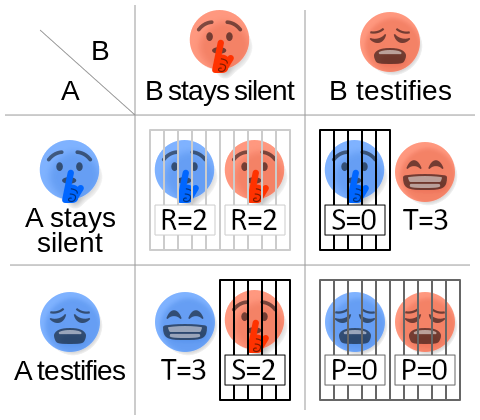The prisonner's dilemma

Imagine you and your best friend get caught doing something wrong. You're both taken to separate rooms and can't talk to each other. The police offer you both a deal:
- If you both stay quiet (cooperate with each other), you each get 1 year of punishment.
- If you both tell on each other (betray each other), you each get 2 years of punishment.
- If one of you stays quiet but the other betrays, the one who tells gets no punishment at all, and the one who stayed quiet gets 3 years of punishment.
We say that the Cooperation Reward \(R\) is 2 (since the player get a 2 years discount on the worst penalty, which is 3), the Punishment payoff \(P\) is 1, the Temptation payoff \(T\) is 3, and finally the Sucker's payoff \(S\) is 0.
This situation is tricky because if you stay quiet, you hope your friend does too, so you both get only 1 year. But if you think your friend will tell on you, you might want to tell on him first, so you don't get 5 years while they go free. And you know that your friend is thinking the same way in his room.



